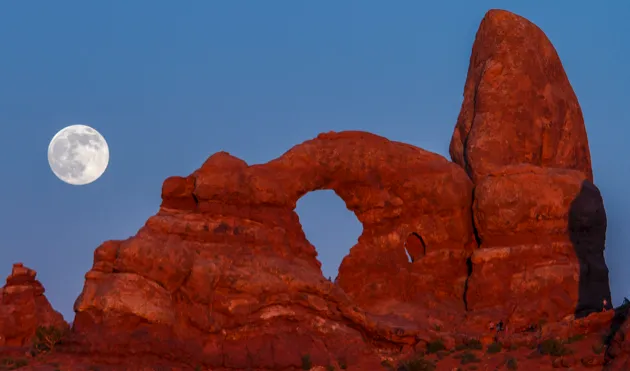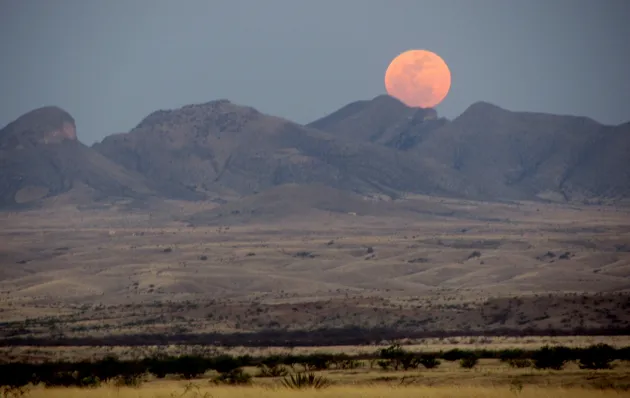What is a supermoon?
The term 'supermoon' was coined by astrologer Richard Nolle some 30 years ago to describe a full moon or a new moon that's at the closest possible distance to the Earth. By this definition, supermoons are a pretty common sight and should appear four to six times a year. NASA adds that supermoons can be up to 14 per cent bigger and 30 per cent brighter to the human eye than normal full moons. In astronomy, these lunar wonders are called 'perigee moons', where 'perigee' simply means 'near Earth'.
How do supermoons come about?
The awe-inspiring sight of a supermoon filling the night sky is actually an illusion created when the Moon is just a few per cent closer to the Earth than usual.
As the Moon orbits the Earth, it will gradually come nearer and nearer until it reaches its closest point. For a supermoon to occur, this day must coincide with either a full moon, where the Moon is on the opposite side of the Earth from the Sun, or a new moon, where it is positioned between the Sun and the Earth.

Where’s the best place to view a supermoon?
Clouds or haze can significantly obscure supermoons, so your best bet is to hope for clear skies and choose somewhere free from light pollution. These celestial marvels tend to take up a lot of the horizon, so choose a location away from nearby houses and trees that could potentially block your view.
What effect do they have on the planet?
If you live by the coast, expect to see high-climbing tides. When a new or full moon is in the sky, the alignment of the Earth, Moon and Sun brings about wide-ranging tides known as spring tides. During this time, high tides are higher than normal and low tides plunge particularly low. With a supermoon, the effects of spring tides are accentuated. NASA says that supermoons pose no real threat to the Earth, but serve to “remind us of the effect of our 'Africa-sized' nearest neighbour on our lives, affecting ocean tides and contributing to many cultural aspects of our lives.”

What is a supermoon eclipse?
A lunar eclipse happens when the Earth passes between the Sun and the Moon and the shadow completely covers the Moon's surface. This is sometimes known as a 'blood moon' due to the reddish colour the Moon takes. A supermoon eclipse occurs when the timings of a supermoon and lunar eclipse coincide, though this is a very rare event, happing only five times since 1910.